Lionel Messi, Diego Maradona and 50 Players Who Changed the Game
Yoosof Farah@@YoosofFarahLionel Messi, Diego Maradona and 50 Players Who Changed the Game

Over the years, there have been many players, from the magnificent to the mediocre, who've changed the way we see football.
Nowadays, we have the likes of Lionel Messi, Cristiano Ronaldo, Andres Iniesta, etc., combining technical perfection with athletic muscularity.
In the past, we had such footballing gods like Pele, Diego Maradona, Alfredo Di Stefano, Johan Cryuff, etc., dazzling millions across the world and inspiring the next generation of superstars above.
And then there are those, who not because of their talent but rather due to certain events, have changed football, such as Jean-Marc Bosman or Antar Yahia.
These footballers, for whatever reason, down the years have altered the way the world watches football matches and have changed fans' expectations of these athletes.
From Leo Messi to Diego Maradona and from Giuseppe Savoldi to Alan Groves, here are 50 players who have changed association football.
Roger Milla
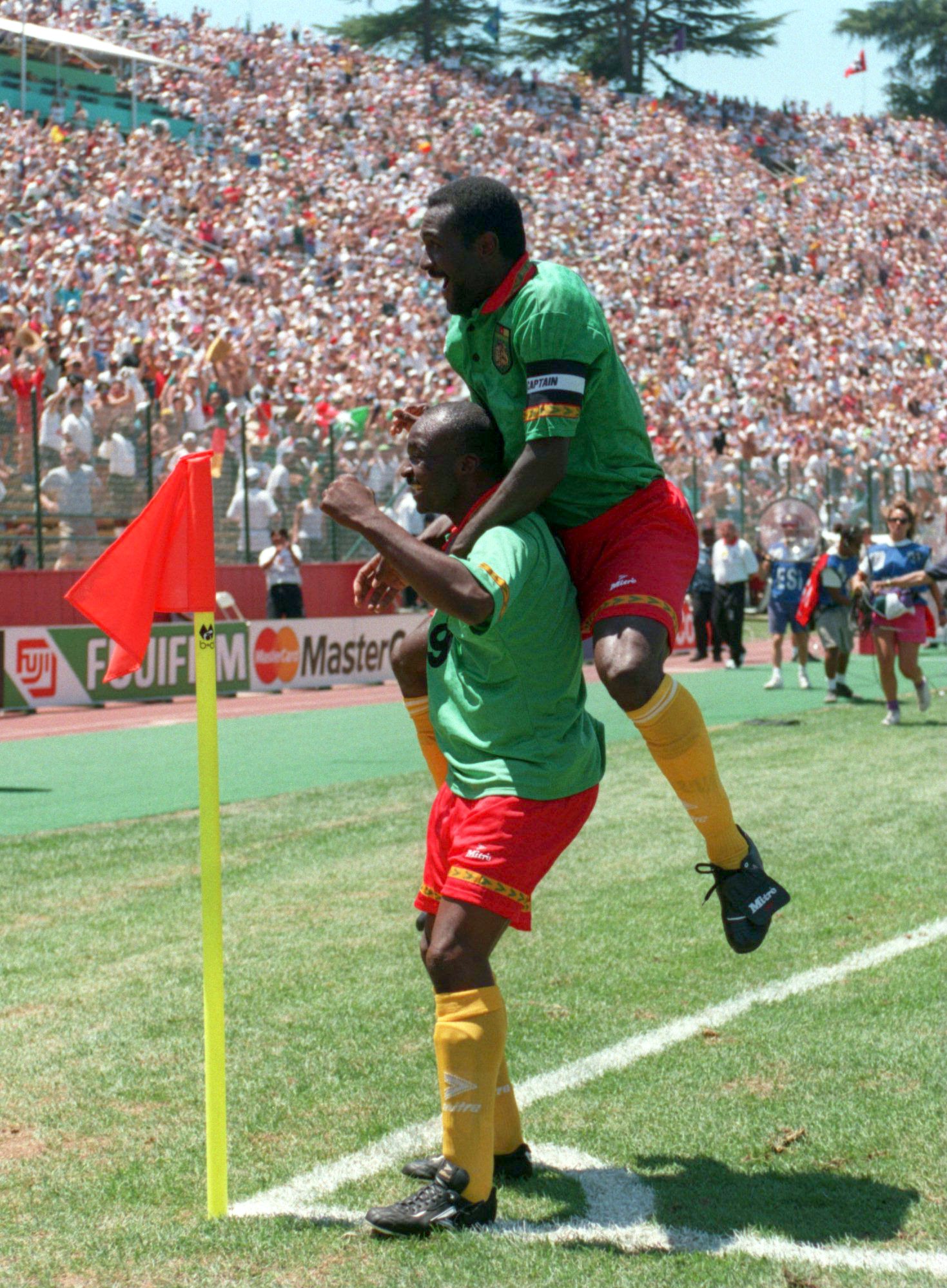
One of the first ever African footballers to become a star on the global stage, Roger Milla went down in football annals after the 1990 World Cup in Italy, at the grand old age of 38.
The Cameroon striker, upon netting each of his four goals in the tournament, set off to the corner flag, where he would dance in front of a rapturous crowd.
And in doing so, he set a precedent unlike any other seen before, sparking the creation of goal celebrations like no other.
From rocking the baby to belly flopping, slalom skiing to jumping into the crowd, it all started thanks to Milla.
The forward also sent another message out to his fellow professionals at the 1994 World Cup, proving that even at a record-breaking 42 years old, it's never too late to still be playing international football. Take note David Beckham!
Joonas Jokinen
Roger Milla may have changed goal celebrations, but that seems like nothing compared to what this guy has done.
The 15-year-old Finnish sensation, Joonas Jokinen, became a viral hit after he changed the way we take penalties.
As the video shows, the FC Baar and Finland U-16 striker kicks the ball and then does a backwards somersault all in the same motion as takes a penalty kick.
Cue the spark in Sunday League and amateur footballers across the world trying the same next time they win a penalty!
Ezequiel Calvente
Joonas Jokinen may have been a viral hit after giving penalties more razzmatazz, but the first true penalty pioneer and YouTube sensation artist was Ezequiel Calvente of Real Betis.
The 20-year-old, in a Spain U-19 match against Italy at the 2010 U-19 European Championship, netted the third for his country in spectacular style.
As he ran up to take the penalty, Calvente deceived the goalkeeper by kicking the ball with his front foot instead of the back one which, for any other footballer in the world, would be swung forward and used to kick the ball.
It was a phenomenal, if not virtually impossible, goal, hailed as the greatest penalty-kick ever and became the defining moment for footballers to truly make a name for themselves via the Internet.
Cafu

Brazil right-back Cafu will go down as one of the greatest full-backs that ever played the game.
Combining all-round defensive capability with remarkable speed, attacking instinct and superb crossing ability.
He set a new standard for the modern day full-back, requiring them to have exemplary cardiovascular and muscular endurance, while emphasising their importance to coaches when it comes to attacking tactics, as well as defensive ones.
Full-backs, now much more of a focal point for managers, need to be able to sprint, tackle, head, cross, pass and support, or even be the winger, all thanks to Cafu.
His all-round play inspired the next generation of world class full-backs, like Patrice Evra, Sergio Ramos, Ashley Cole and Dani Alves.
Fernando Torres
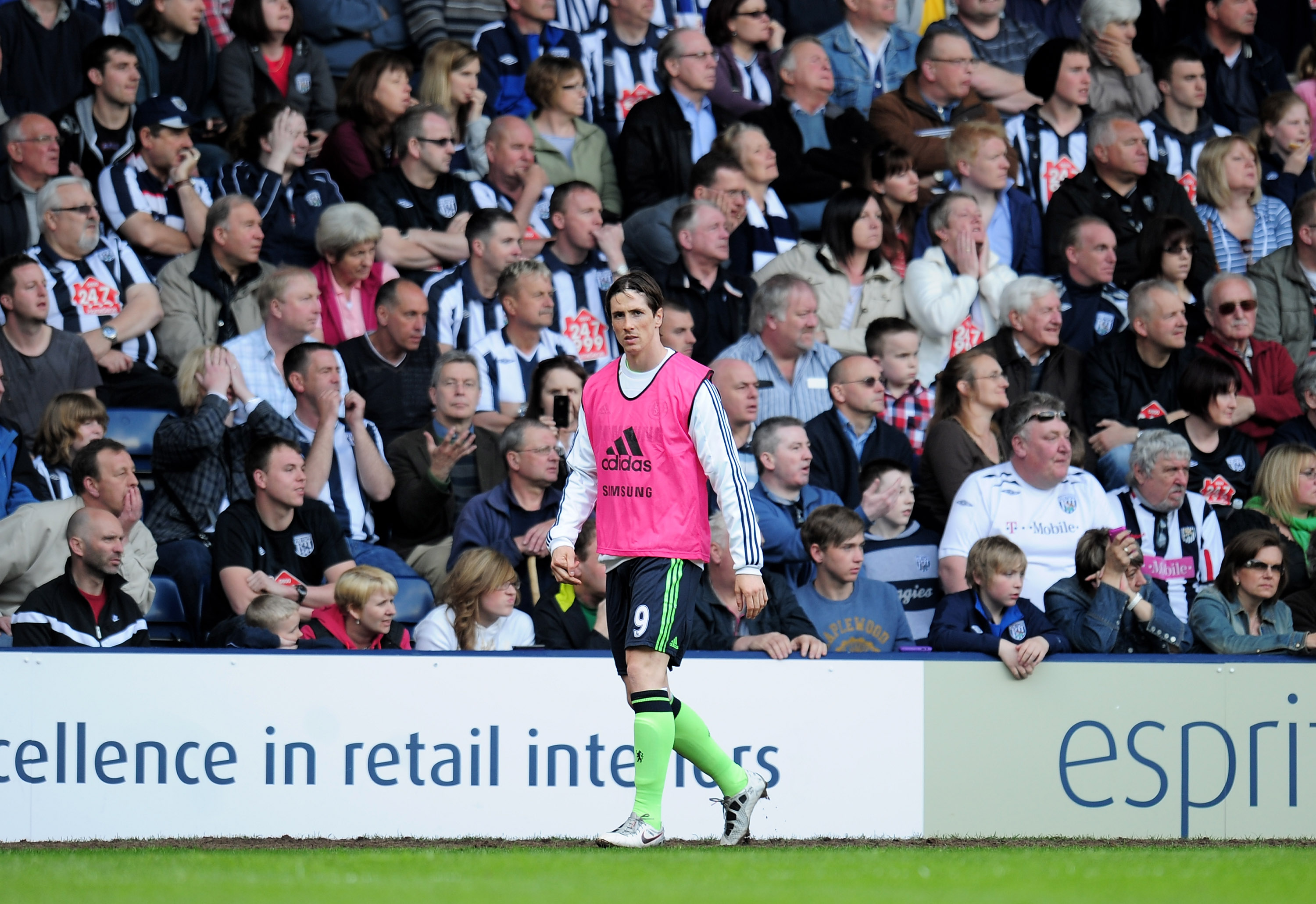
A strange one on here it may seem, but Chelsea striker Fernando Torres has now actually changed football somewhat.
His record-breaking £50million transfer has been an absolute calamity so far, with the previously proven forward having not scored in 12 matches now for his new employers.
And such stats have marked the point in the sport where transfer fees, with no guarantee of any sort of return, have spiralled unsustainably out of control.
The transfer has highlighted the desperate need for UEFA's new financial fair play rules, while Torres has proved that such significant fees can be damaging and crush a player psychologically, all to the detriment of his new team.
Jurgen Grabowski
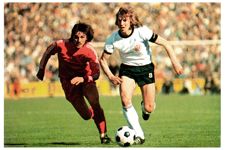
Unknown to many, Eintracht Frankfurt and West Germany winger, Jurgen Grabowski, has changed the way managers use their wingers.
Coming to prominence at the 1974 World Cup in West Germany, Grabowski became one of the first ever wingers to play on both wings, switching at half-time and at certain points during matches from one flank to the other.
This new, outlandish tactic confused full-backs, blew away all their preparation for the one winger they thought they'd be up against, and made everything Grabowski did unpredictable, for a while anyway.
It was a clever ploy from coach Sepp Herberger, utilised to perfection by Grabowski, which saw West Germany win their home World Cup in style.
And it was an idea which sparked a wing play revolution, requiring wingers to be competent in beating full-backs regardless of which wing they were playing on and which foot they used best.
Ryan Giggs
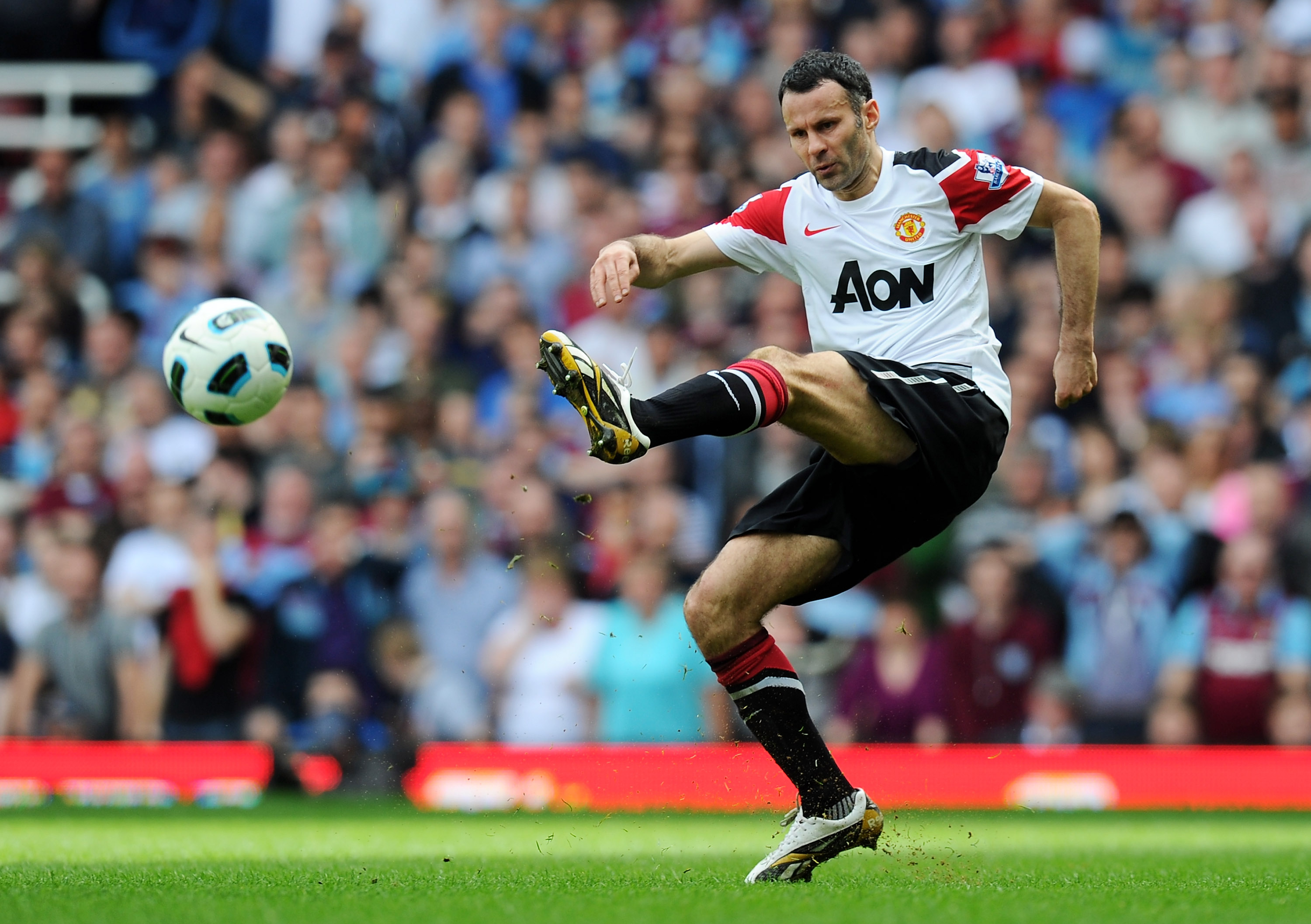
And speaking of wingers, who better to include than Manchester United and Wales legend Ryan Giggs?
Having started his professional career in 1991, before the Premier League was even invented, Giggs has won a record-breaking 11 league titles, four FA Cups, four League Cup trophies and has two Champions League winners' medals. He is also United's highest all-time appearance maker, beating Sir Bobby Charlton's record of 758 games.
He has changed the face of football, not for his one-club loyalty or even the fact he's scored in every single Premier League season, but rather the longevity of his career at the very highest level.
The top players today have learnt from Giggs, the importance of looking after themselves and making sure they get everything right, from their diets, to their gym work, to the balance between work and rest, and most importantly, getting their lifestyle right.
Ryan Giggs has made the message simple; if you want to be remembered as a great, you have to look after yourself.
Pele
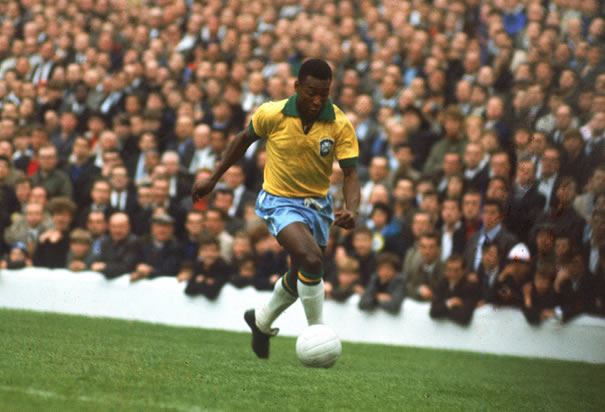
Pele, one of the two most famous and synonymous names in football, is arguably the greatest footballer that's ever lived.
Voted as the footballer of the century, Pele single-handedly raised the standard required to be a top-level striker and all-round player.
As soon as Pele hit the scene for Santos as a 15-year-old, it no longer became acceptable as a forward to wait for chances in and around the penalty area.
With never-before-seen dribbling skills, pace and short give-and-go passing ability, as well as a viciously powerful shot and remarkable overall technique, Pele immediately took prolific goalscoring to an all new level, while his natural athleticism gradually gave birth to a more muscular and fitness-orientated side to football.
That, along with his unbelievable ability to beat defenders in the air and score headers for fun, made Pele the most prolific goalscorer the world has ever seen.
Seventy-seven goals in 92 caps for Brazil and 1281 goals in 1363 games for Santos and the New York Cosmos makes this Brazilian legend a true footballing God.
Johan Cryuff

When you think of Johan Cryuff, two things usually spring to mind: Ajax, and total football.
Deployed by legendary coach Rinus Michels, Cryuff was the player who made this system tick.
Defined as a "centre forward," when it came to total football, Cryuff would be all over the place. His marker would think he'd have the Dutch legend in his pocket in a central position, only to blink and find Cryuff with the ball, tearing down on goal from the wing.
His ability to move around, drag defenders out of position, bring an element of unpredictability to his play, and lose markers in an instant, along with his outstanding finish ability, dribbling skills, pace and a superb eye for a pass, really did make this man the "total footballer."
He also created the famous Cryuff turn, where he'd pretend to pass the ball, but instead swing the ball behind his planted foot in a 180 degree motion and swivel past his marker.
Filippo Inzaghi
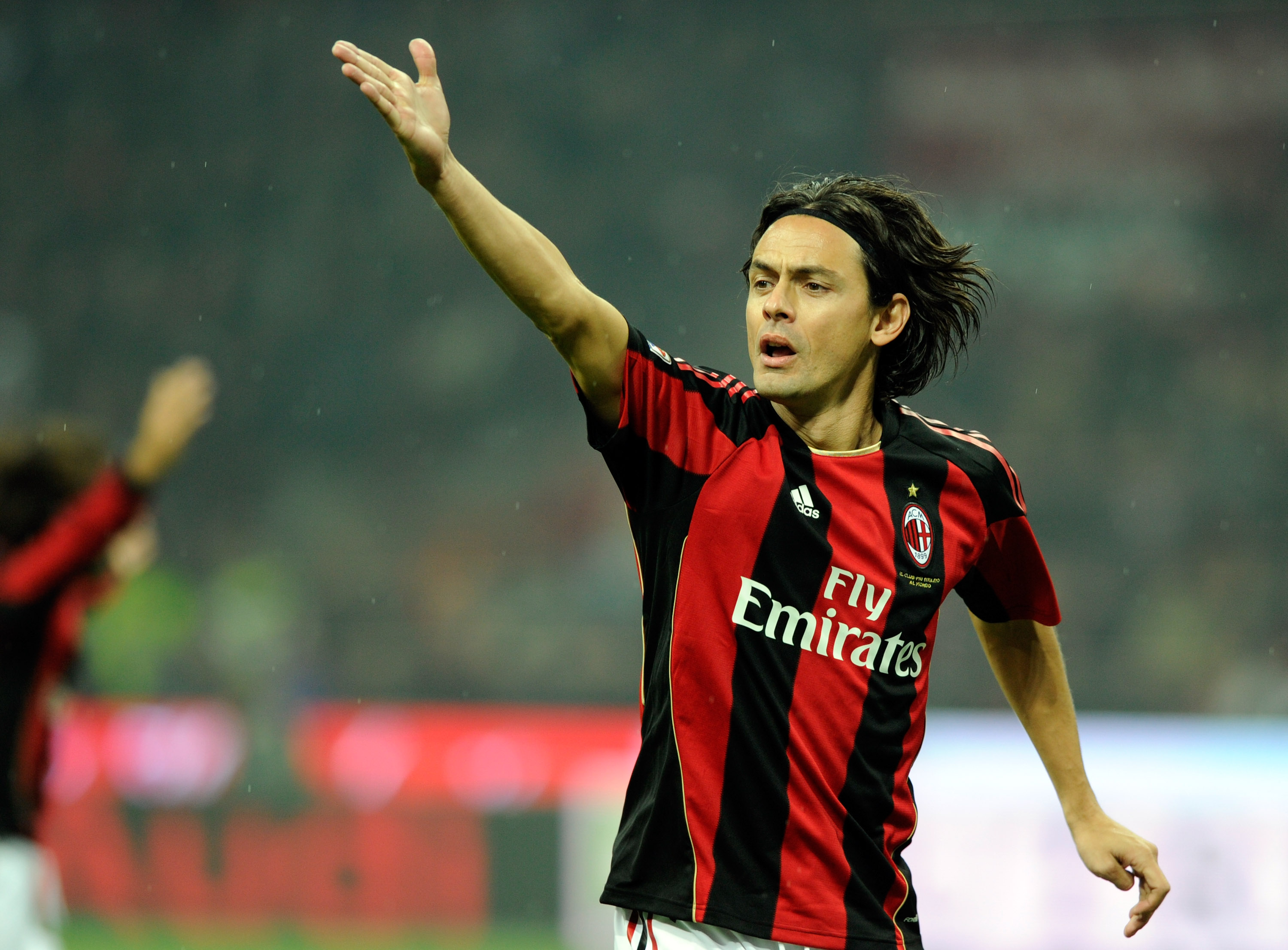
A true AC Milan legend, Filippo Inzaghi found a new way for strikers to become prolific and score shed loads of goals.
By playing on the shoulder of the last defender, Inzaghi, down the years, has found himself in terrific goalscoring positions, with one-on-ones aplenty, and even occasionally being so far ahead he's already past the goalkeeper by the time he pokes the ball home.
Said to be "born offside," Inzaghi sparked a precedent of almost living in the final third of the pitch, being immediately ready to pounce on any defensive mistakes and tuck home a vital winner.
He may not have been the shining example for future goal-poachers, but Pippo Inzaghi showed the world that so-called lazy strikers will always be the ones who score most at the end of the day.
Jean-Marc Bosman
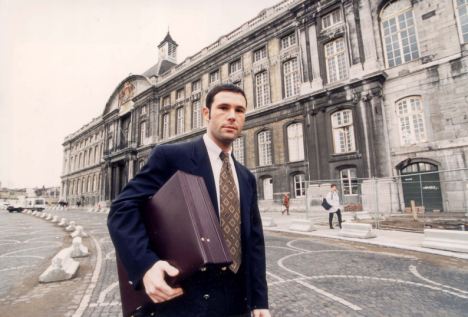
Belgian midfielder Jean-Marc Bosman never had a spectacular career, with his highest being the first five years of his professional career, where he was a bit-part player at his main hometown club, Standard Liege.
Not exactly the type of player who could change a sport it would seem.
However, in 1990, when his contract at another Liege team, RFC Liege, expired, he tried to move to French team Dunkirk, but they refused to offer a transfer fee, and so Liege subsequently refused to let Bosman leave the club. Instead, they significantly reduced his wages as he was no longer a first-team player.
Bosman rightly felt this was unfair, took his case to the European Court of Justice, and after five years of turmoil, won and gave all EU players in the present and future the right to a free transfer at the end of their contracts.
Thanks to Jean-Marc Bosman, players were no longer slaves to their clubs. It was a happy ending for football, but not so for Bosman himself, as you can read here.
David Beckham
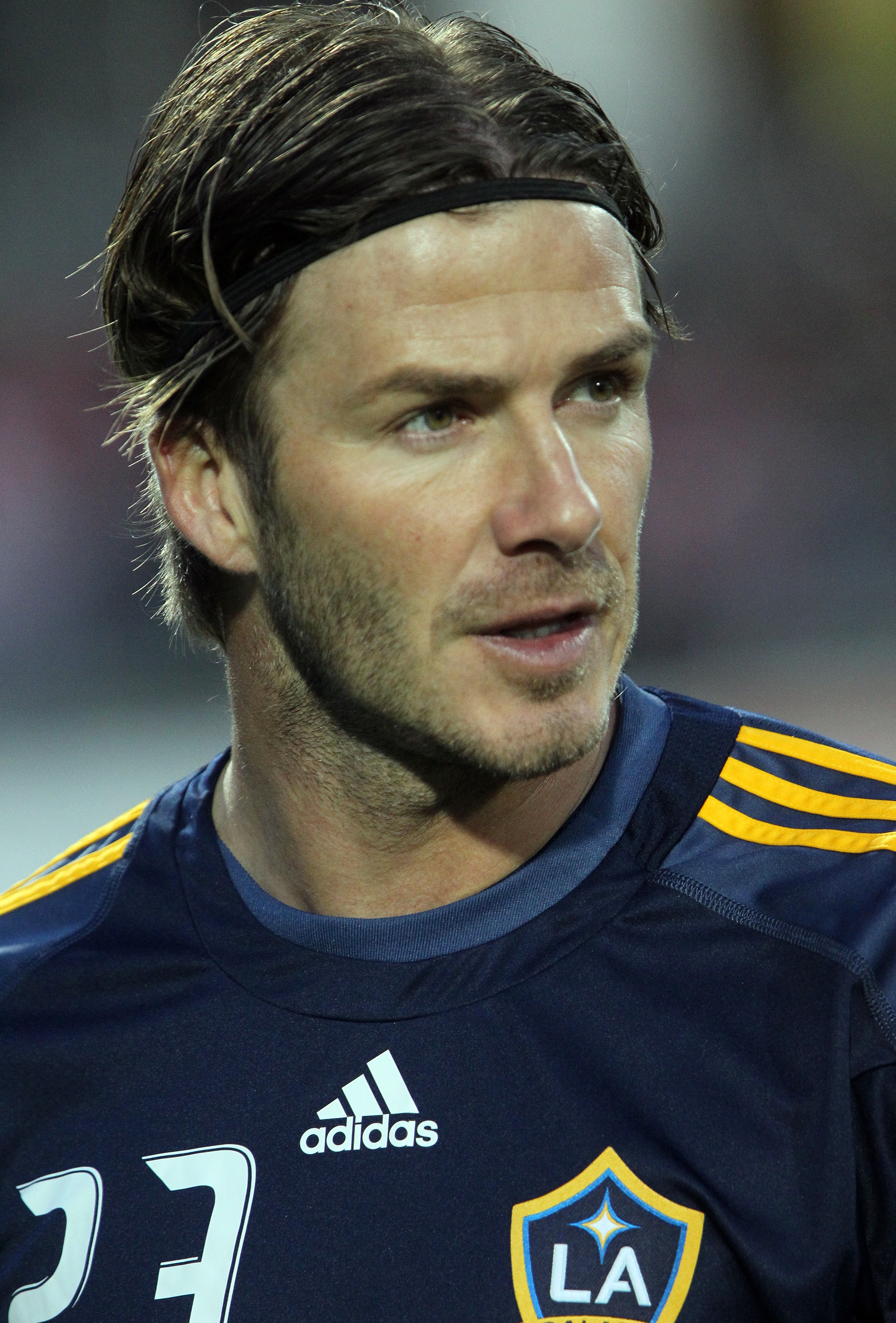
From one very poor player who's changed the game, to a super-rich one.
LA Galaxy and England star David Beckham, formerly of Real Madrid and Manchester United, has added a new wealth to football, making the top-level footballer nowadays all the more marketable.
Earning millions from advertising deals and image rights, Beckham gave top-level footballers new ways of making money, and in the process, made himself one colossal money-making juggernaut.
The secret to being rich is all about one's ability to make money for other people, and through his association with various brands such as Adidas and endorsement of their products, "Goldenballs" raises huge money for his sponsors and for his club through shirt sales, as well as his ability on the pitch to win games and subsequently prize and sponsorship money for the team.
And speaking of his ability, Beckham changed football on the pitch through his incredible free-kick ability, creating the trademark curling free-kick, while he also showed footballers across the world how to cross from deep, i.e. put a pinpoint cross onto a striker's head without always having to run and deliver the ball from the byline.
Ali Daei

The world's all-time leading international goalscorer, Ali Daei is synonymous with football in Iran.
Being the first ever player from Asia to feature in the UEFA Champions League, Daei sparked hope for superstar hopefuls across the world's largest continent that they can make it big in football.
Following Daei's entrance in star-studded European football, other greats like Park Ji-Sung, Shunsuke Nakamura, and Ali Karimi have all graced the game at the world's highest level, while the Asian influence is getting ever stronger with talents such as Keisuke Honda, Shinji Kagawa, Ki Sung-Yong, Masoud Shajoei and Lee Chung-Yong.
And not only has Daei sparked a development in football throughout Asia by opening up avenues for all Asian footballers to ply their trade in Europe, but he's also brought value to representing one's country, no matter how low the standard of football and has proved playing for your national team can still pay massive dividends, such as being the all-time leading international goalscorer with 109 goals.
That's even more than Pele or Diego Maradona!
Jong Tae-Se
Speaking of Asian players and the value of representing one's country, North Korea and VfL Bochum striker Jong Tae-Se showed at the 2010 World Cup how big of an honour it should be playing for your nation, by crying during the national anthem!
But more importantly, Jong Tae-Se, through his stand-out performances which helped North Korea qualify for the World Cup, changed the game by effectively showing how powerless FIFA can be against dangerous, corrupt, censored nations where the players aren't given the facilities they need (the North Koreans had to use a public gym at their Johannesburg base) and can't be accounted for.
Tae-Se also created an avenue for players from such nations to use their talents to escape the hardships of their country and seek a better life elsewhere, through the power of football.
Patrick Vieira

Former Arsenal and Inter Milan player Patrick Vieira will go down in football history not only as a legend for the Gunners and France, but also as the foremost player in creating the modern-day box-to-box midfielder.
With a strong, muscular physique and terrific tackling technique, Vieira protected the back four brilliantly and was the most reliable holding midfielder in Arsenal's history.
But what Arsene Wenger did with the young £3.5million player from AC Milan was to also turn him into a more energetic midfield dynamo, marshalling the midfield and providing an extra option in attack, whilst also being back in time to break up any counter-attacks.
Patrick Vieira, in essence, set the trend in how to dominate and influence the midfield third.
Justin Fashanu

In August 1981, Justin Fashanu became the first ever black football player in Britain to command a fee of £1million.
Nine years later, he publicly came out as a homosexual, despite the barrage of abuse he received from fans, coaches, fellow players and former colleagues.
At a time when racism and homophobia weren't the serious issues they are today, Fashanu broke down such barriers in football, and in doing so, made great strides in putting equality into football.
Sir Stanley Matthews
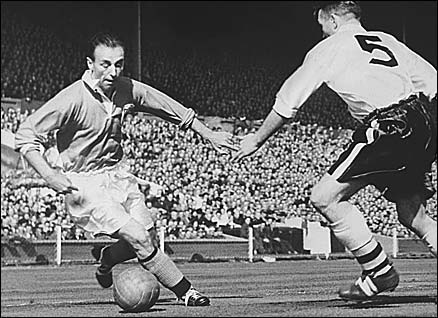
Sir Stanley Matthews was the first and only footballer so far to be knighted while still playing the game.
He was also the first winner of the Ballon D'Or, the oldest person to ever play in the English top-flight, and the oldest ever person to have represented their country.
And most remarkable of all, Sir Stanley Matthews was not booked or sent off in his entire 800-plus game career.
Playing in the most demanding position, a winger, and still being able to play competitive football up to the age of 70, Matthews brought true bodily discipline to the game, being a vegetarian and a teetotaller.
He also brought respect into the game, teaching players the value of respecting the officials and the opposition.
All in all, Sir Stanley Matthews was a true gentleman, and changed the way footballers had to treat themselves and others.
Lionel Messi

The greatest player of this generation, two-time World Player of the Year/Ballon D'Or winner, Lionel Messi, has raised modern-day footballing standards.
The Argentina international, considered the one true heir to Diego Maradona, in terms of goals to games, is one of the most prolific forwards in FC Barcelona's history.
His natural attacking instinct, his pace, his phenomenal close control and dribbling skills, his expert finishing ability, his tricks, his forward movement, his clever link-up play, his eye for a killer pass and his unbelievable technique and footwork have made Messi the most complete attacking player in world football today.
The fact that a player standing at just 5'7'', after taking growth hormones as a youngster to be tall enough to play top-level football one day, can create such magic and be considered one of the best players that ever lived, has made academies across the world do a massive re-think on height restrictions when it comes to signing talent.
As Leo Messi has proved, you're never too small to be a footballer.
Alfredo Di Stefano
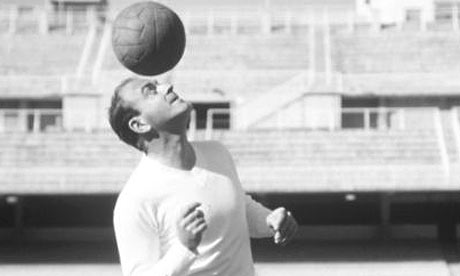
Speaking of complete players, Real Madrid legend Alfredo Di Stefano has a claim to being the greatest player ever.
Labelled as the best by Pele himself, Di Stefano will forever be the best player never to have played in a World Cup, after injuries and FIFA mix-up cruelly denied him his chance.
Di Stefano was the first real complete player, with the ability to play almost anywhere on the pitch. His strong yet svelte physique and top finishing ability made him an imposing, prolific centre-forward, while his extraordinary vision and passing accuracy made him the best attacking midfielder around—along with his superb stamina and acceleration, combined with his pinpoint crossing ability making him the best winger around.
Inspiring Pele, Eusebio, Johan Cryuff and, today, the likes of Lionel Messi and Luis Suarez, Di Stefano first invented the complete player, meaning that instead of just being able to shoot or pass or cross or tackle, you had to do all four if you wanted to be the best.
Antar Yahia
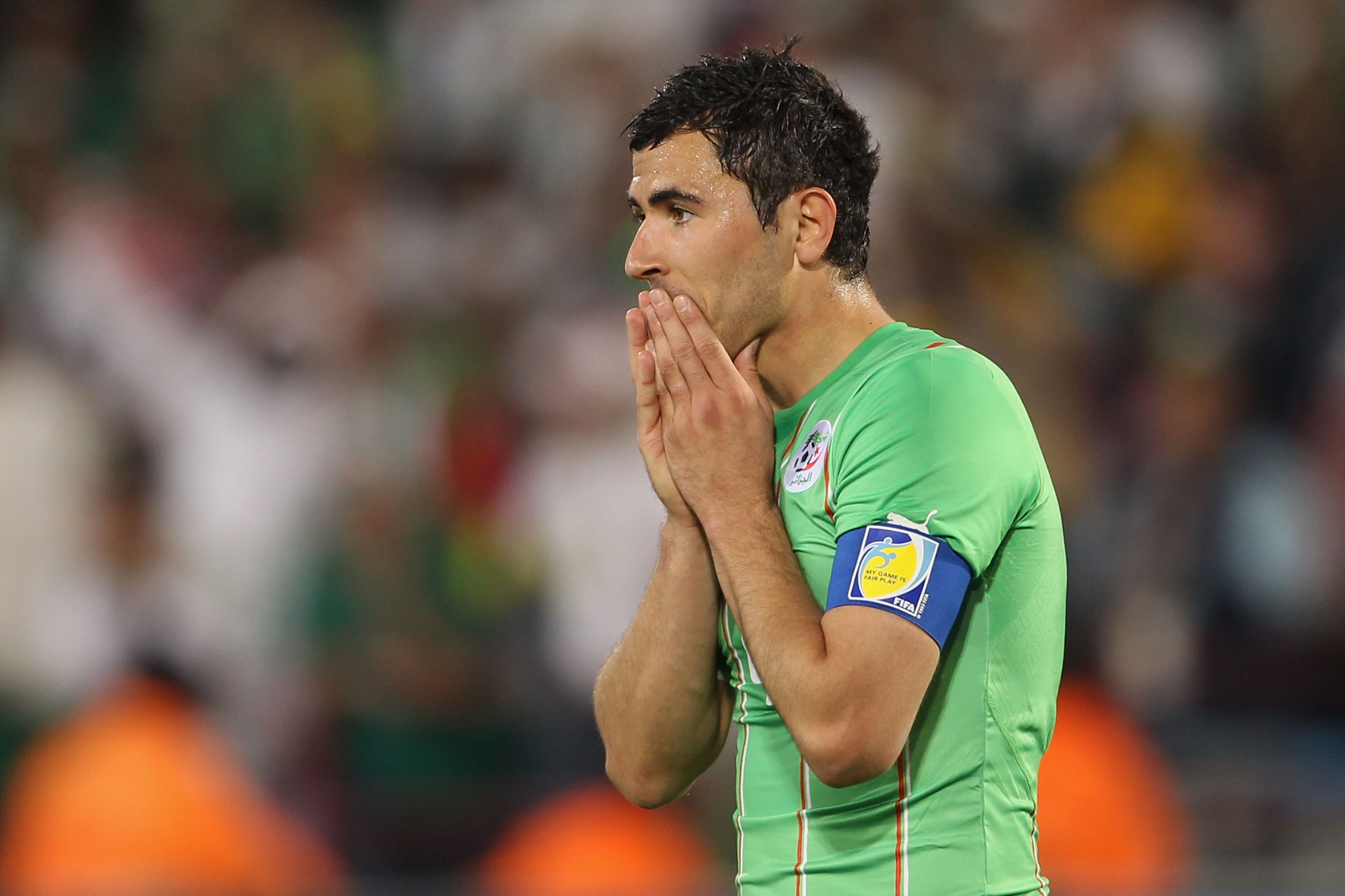
Antar Yahia, with all due respect, isn't anything special. He's just a defender for Bundesliga side VfL Bochum.
However, he changed football by becoming the first ever player to switch national allegiances, profiting from a rule change on international eligibility by FIFA in 2003, after representing France at youth level.
He now has 50 caps for Algeria, and has sparked a trend of country swapping, with players representing one country at youth level, then switching allegiances to earn more caps.
Ryan Babel
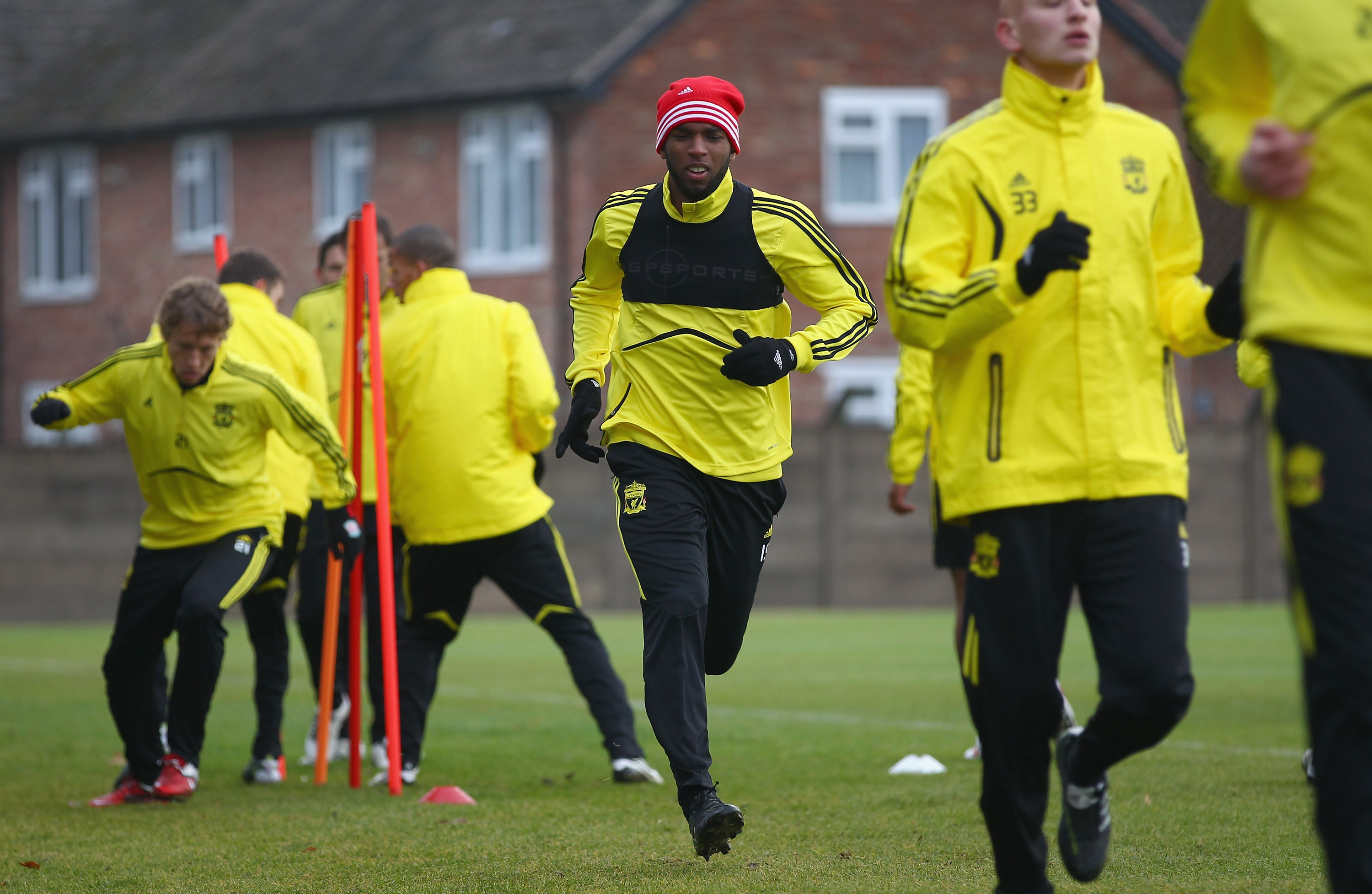
Hoffenheim and former Liverpool star Ryan Babel sparked controversy when he became the first ever player to be punished by footballing authorities for his actions on the Internet.
Babel was charged with improper conduct and fined £10,000 after releasing a doctored image on social networking site Twitter of Howard Webb in a Manchester United shirt, with the message, "and they call him one of the best referees? That's a joke. SMH [shaking my head]" following Liverpool's 1-0 FA Cup defeat to United at Old Trafford.
West Ham United and England striker Carlton Cole has since been charged for comments on Twitter, while his teammate Danny Gabbidon could also be in hot water with the FA after an X-rated tweet.
Marco Van Basten
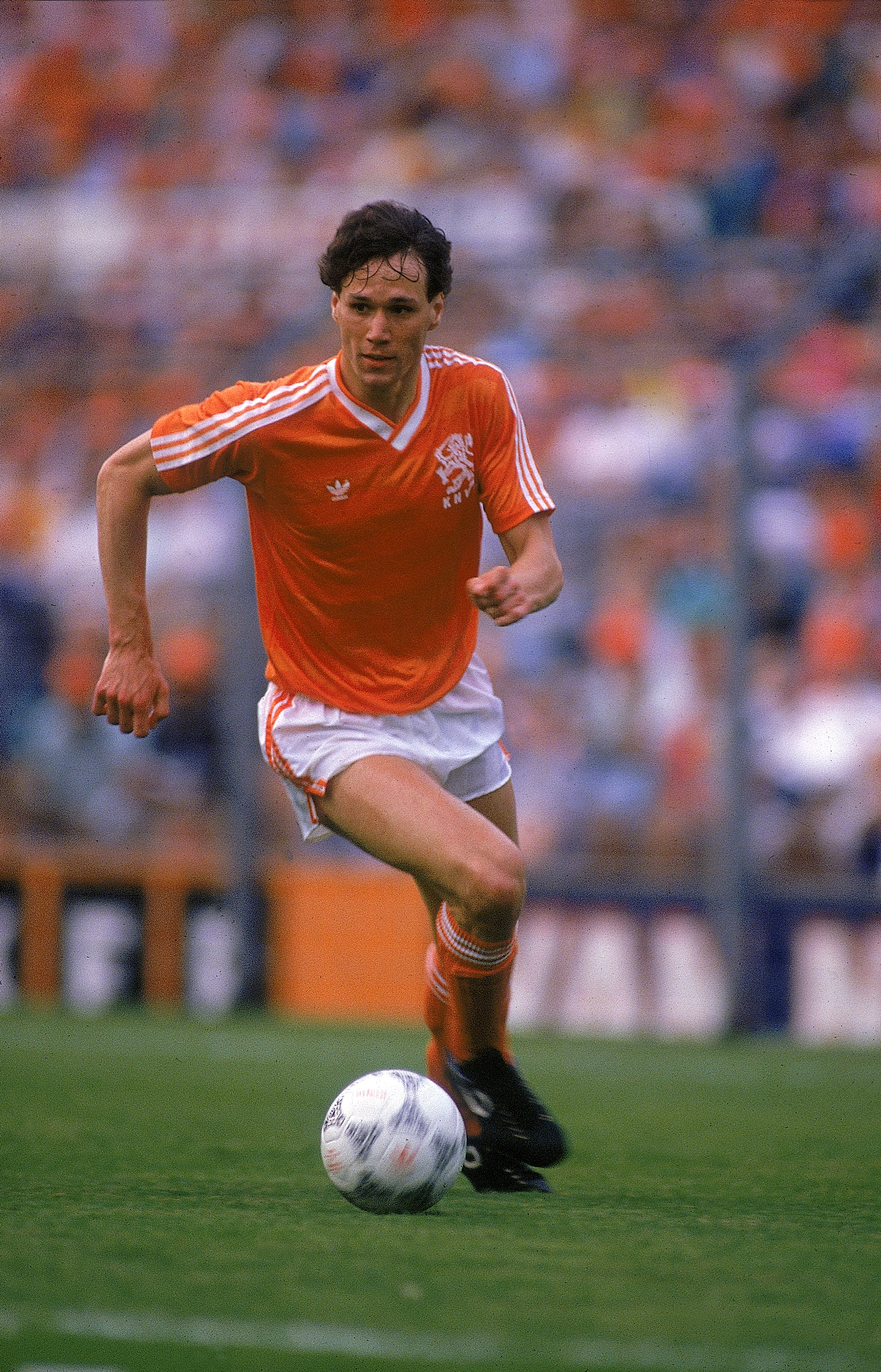
From one Dutch player to another, Ajax and AC Milan legend Marco Van Basten influenced the next generation of top young stars.
Widely considered one of the greatest forwards ever, Van Basten gave confidence to strikers to try their luck from anywhere, after scoring that goal against the USSR in 1988.
From his ability to swivel past defenders, deceive goalkeepers, hold the ball up and score spectacular wonder goals from all over the place, Van Basten undoubtedly gave all future strikers confidence that it's possible to score from even the most impossible of angles and distances.
Andres Iniesta

A star member of the current FC Barcelona team, which will go down in history as the greatest club team of all time, Andres Iniesta epitomises tiki-taka, the famous tactical system which won Spain the World Cup and Barca all the titles they currently have.
Amazing close control and dribbling skill, which means Iniesta almost has the ball glued to his toes, makes it virtually impossible for any player to steal the ball from him. He has put the importance back into running with the ball instead of always passing it to goal.
And also he re-shown the world it's not just the long passes of Xavi, Paul Scholes and Xabi Alonso which score goals, but also how having the eye and consistent accuracy to make a long succession of short passes can create gaps and unlock defences.
It was also Iniesta's goal which won Spain the World Cup, and made the world realise how much talent these previously perennial underachievers actually have.
Wesley Sneijder

Speaking of re-inventing, the former Ajax and Real Madrid star has shown the footballing world once again the importance of having a designated playmaker.
Playing in an attacking position, Sneijder usually receives the ball just outside the final third, where he'll turn and be the lynch pin of every attack, looking forward to see options being created on the wing, in the penalty area and just outside the box.
It's due to the presence of this playmaker who's in possession that players run to create space and passing options, whilst the playmaker himself decides who to pass to, or if he has enough space, can take a shot himself.
It's the reason he's scored a goal every four games in his career and is the reason Inter Milan won the treble in the 2009/10 season.
Wesley Sneijder has re-born the playmaker role.
Cristiano Ronaldo
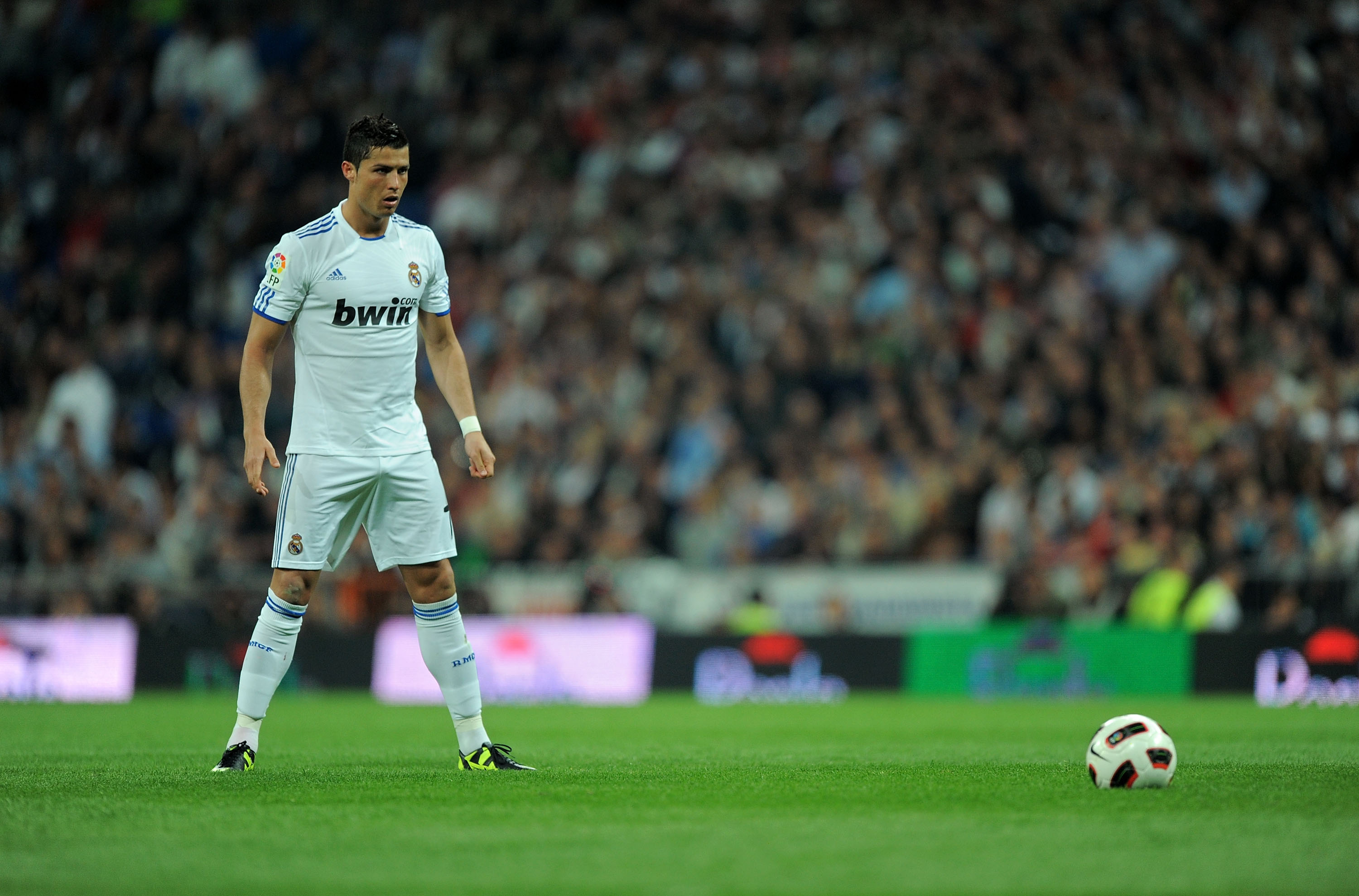
Cristiano Ronaldo is the man who has taken football to a completely new level altogether.
The Real Madrid and Portugal star has put the audacity into football, making cheeky back-heel goals acceptable, making step-overs popular again, and giving birth to the piledriver free-kick.
After his world-record £80 million move to Los Galacticos from Manchester United, he has shown football club owners across the globe the price you have to pay for the best talent around.
And following such a transfer, he's also proved that colossal transfer fees don't have to affect your game, and that at the end of the day they're just proof of the faith your football club has in you.
Having scored 74 goals in 81 games for Real Madrid since his transfer, as well as making 20 assists, Cristiano Ronaldo is showing the world no matter how much a players costs, his fee can always be returned.
Johnny Haynes
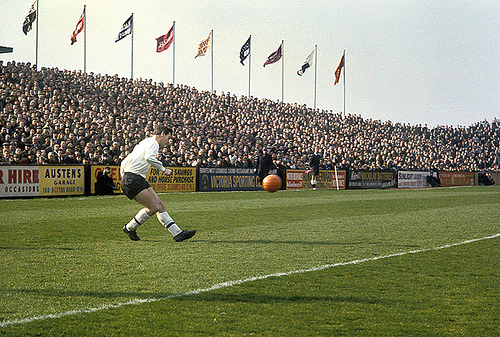
Legendary Fulham forward Johnny Haynes is the Cottagers' all-time leading appearance maker and will go down in English football history as Fulham's best ever player, with passing and tactical understanding even greater than the current crop of FC Barcelona players.
Even Pele once said that Haynes was the best passer of the ball he had ever seen.
However, that's not why Haynes is on this list. Rather it's because of how he used his talent to great personal effect.
Following the abolition of the £20 maximum wage for a footballer in 1961 in England, Johnny Haynes became the first ever player to earn £100 a week. Big money in those days.
The chairman of Fulham, the comedian Tommy Trinder, said of his decision to give Haynes such money, "Haynes is a top entertainer and will be paid as one from now on."
It became the point in football where the world realised these athletes were paid to play football for a reason; they entertain people.
Giuseppe Savoldi

Like Cristiano Ronaldo and Johnny Haynes, Giuseppe Savoldi also set a precedent when he became the first player to be sold for billions.
Well, two billion lira that is, which equates to £1.2million, making Savoldi the first ever player to be sold for millions.
Huge money at the time—SSC Napoli decided the splash the world-record cash, signing Savoldi from Bologna as they attempted to make a charge at the Serie A title.
It was a big gamble at the time, but considering it worked out okay as striker Savoldi scored 55 goals in 118 games, such a transfer soon became the standard amount for luring in the top talent.
Diego Maradona

Nobody will ever fully understand the myth, the man, the maverick that is Diego Maradona.
The most decorated, skillful and downright confusing character in football, Maradona completely changed the face of the game.
His ability to run at such high speeds and maintain such close control of the ball, then skip past defender after defender, before scoring from the most ludicrous of angles, meant Diego Maradona could command world record wages wherever he went.
Boca Juniors, FC Barcelona, Napoli, Sevilla, all top clubs in Maradona's time, and yet this little Argentine could just stroll in, demand the most ridiculous of things, and get exactly what he wanted. Such was the power of Diego Maradona.
During his playing career, football had never before seen such a talented, powerful character who could command such respect with almost godlike status.
And after his retirement, football had never before seen a player lose control of his life in such a way as Diego Maradona did.
Alan Groves

Quite possibly the greatest player you never saw, Alan Groves proved inspiration to all the rest in football circles to entertain fans on the pitch and entertain yourself with a Playboy lifestyle off it.
He never played in the top-flight, and his career high came playing for Oldham Athletic. But Alan Groves inspired all future players how to really be an entertaining footballer.
He's such an affinity with the supporters, and as one fan remembers, "Against Charlton, Groves stopped and put his foot on the ball. The Charlton player on the touchline seemed hesitant to approach, but then Groves passed the ball to him."
"And as the player turned round to give the ball to his teammate, Groves sprinted between the pair of them, regained possession and continued with his dash down the left."
And if that's not entertainment for you, how about this one. "In a home match against Bristol City, Grovesy had been terrorising the Bristol defence, nutmegging them and everything."
"Anyway, he received the ball on the wing, bore down upon goal with the City players in pursuit when he suddenly stopped dead, bent down, and pretended to tie his bootlaces."
"Ernie Hunt, the Bristol guy who's come to tackle him was so stunned he didn't react or try to nick the ball off him. Grovesy just stood up again and went past him before firing in a shot from 20 yards."
George Best
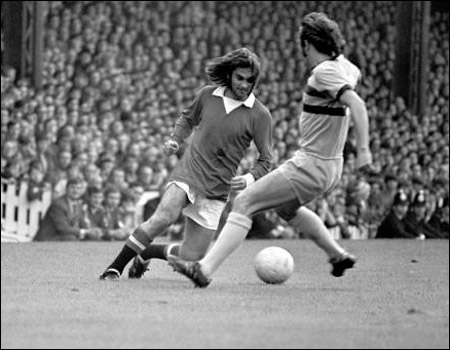
A trend-setter in how to live the Playboy life, just like Alan Groves, George Best put the entertainment back into football.
He wasn't the best team player, couldn't use his skill to always get the best out of the team, and didn't have the best reading of the game, but when a player gave Best the ball, they knew things were going to happen.
He wasn't once afraid to take on a defender, and always had that swagger about him that if he'd get one-on-one with an opponent, he'd beat them every time.
George Best brought swagger into the game, giving all future players belief in themselves, making sure they got the message; if you want to be the best, you've got to make sure you know it, and more importantly, that your opponent knows it.
Best also brought to the game the importance of being equally skillful with both feet. A natural right-footer, by the end of the career, George Best was so good with his left everybody thought he was always a left-footer.
Samuel Eto'o
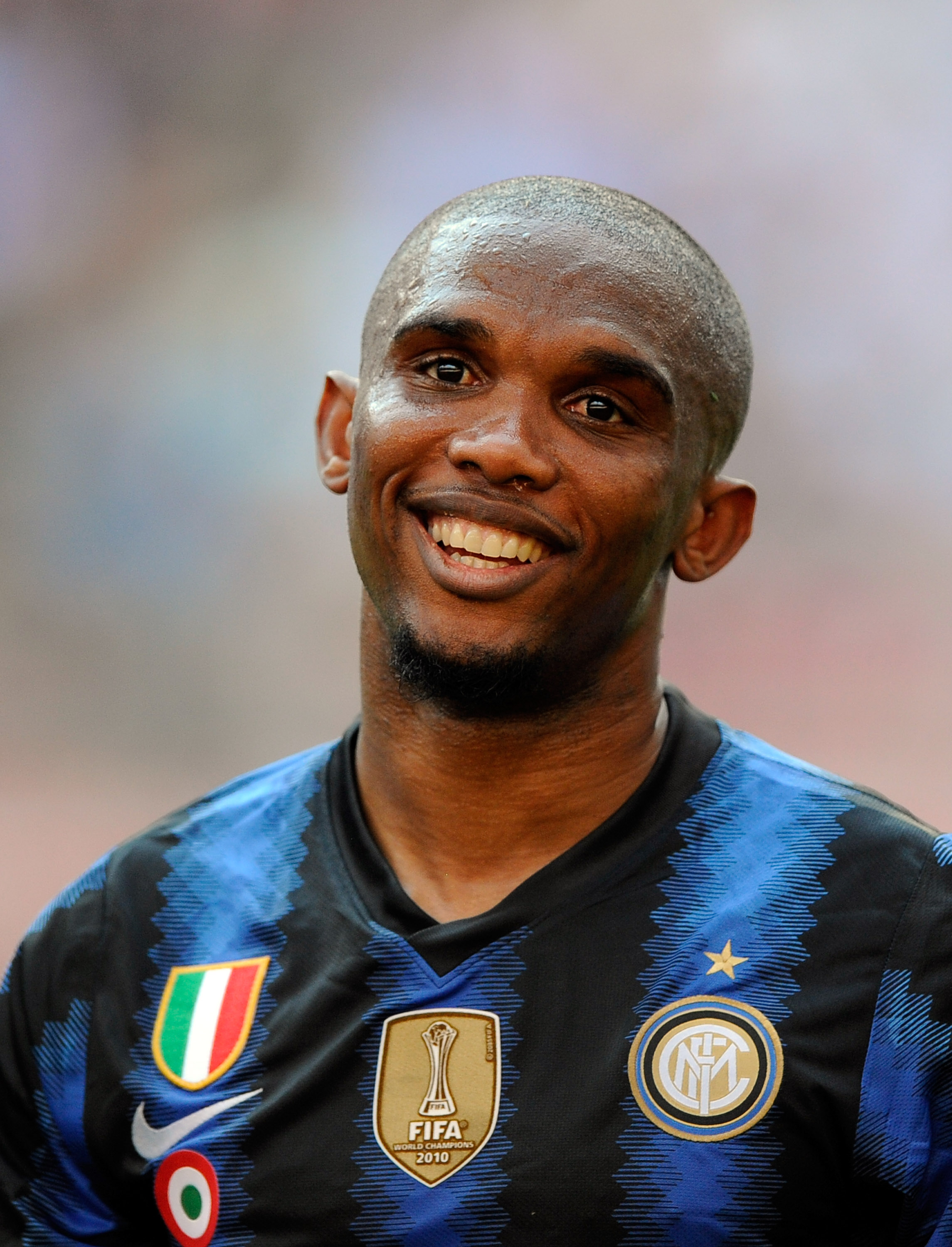
The most decorated African player of all-time, Cameroon legend Samuel Eto'o is the only player in history to win two European domestic trebles, with Inter Milan and FC Barcelona.
He is the second player to have ever scored in two separate Champions League finals and the fourth player to have won the Champions League two years in a row with different teams. He has won a record four African Player of the Year awards, and is the leading all-time scorer in the African Cup of Nations with 18 goals.
Having won three Champions League titles and scored 52 goals in 101 games for Cameroon, Samuel Eto'o has provided hope to Africans all across the continent to pursue their dreams.
But most importantly, Samuel Eto'o has done all this after overcoming extreme racial abuse both in Spain and Italy.
He has proved that although racism still exists in football, it will never prevent a footballer from achieving his dreams.
Juninho Pernambucano
Possibly the greatest free-kick taker of all time, Juninho Pernambucano showed the world how to take free-kicks.
Such a dead-ball specialist, Juninho made scoring free-kicks look easy, rifling shots in from all angles and distances.
He gave confidence to the next generation, which has now seen a wave of notable free-kick takers all fancy their chances every time an opportunity arises, for example Cristiano Ronaldo.
Andres Escobar

Andres Escobar proved that footballers aren't always protected and still have the same vulnerability as everyone else.
Following his own goal against the United States in Colombia's 2-1 loss at the 1994 World Cup, Escobar was shot dead at a bar in Medellin (Colombia's second largest city), reportedly by associates of angry, powerful drug lords who lost millions in gambling losses after the match.
His death caused great outrage in Colombia, and still does, while the whole incident sent out a chilling message; there is a dark, sinister side to football, and sometimes, it can literally be a matter of life or death.
Ronaldo
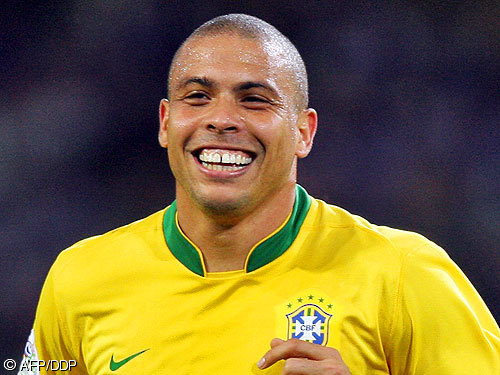
One of the most prolific goalscorers the world has ever seen, Brazil legend Ronaldo taught modern-day strikers at the top level how to score goals.
Energetic inside and outside the penalty area (back in the day), Ronaldo would twist and turn and spin defenders from side to side, making them so confused they lost track of the ball before the Brazilian striker would be through on goal to slot the ball home.
He'd also run back and forth, making defenders spin around before ditching his marker and creating enough space to head or volley the ball into the net.
In essence, Ronaldo was the one true player who knew how to make defenders dizzy, hence a club career total of 352 goals from 517 games, including a once record (just recently beaten by Lionel Messi) 48 goals in one season for FC Barcelona.
He also scored 62 goals in 97 caps for Brazil, and is the highest goalscorer in World Cup history.
Ronaldinho

From one Samba legend to another, Ronaldinho brought flair and excitement back into football.
Unlike most other players who feel confident in dribbling with the ball, Ronaldinho would actively run to defenders, use the famous Ronaldino elastic, or stepovers, or a Cryuff turn, then skip past the opponent try his moves on another.
Ronaldinho proved footballers can still be prolific and exciting at the same time, while the constant smile he has on his face while playing reminded the world, football is fun.
Park Ji Sung
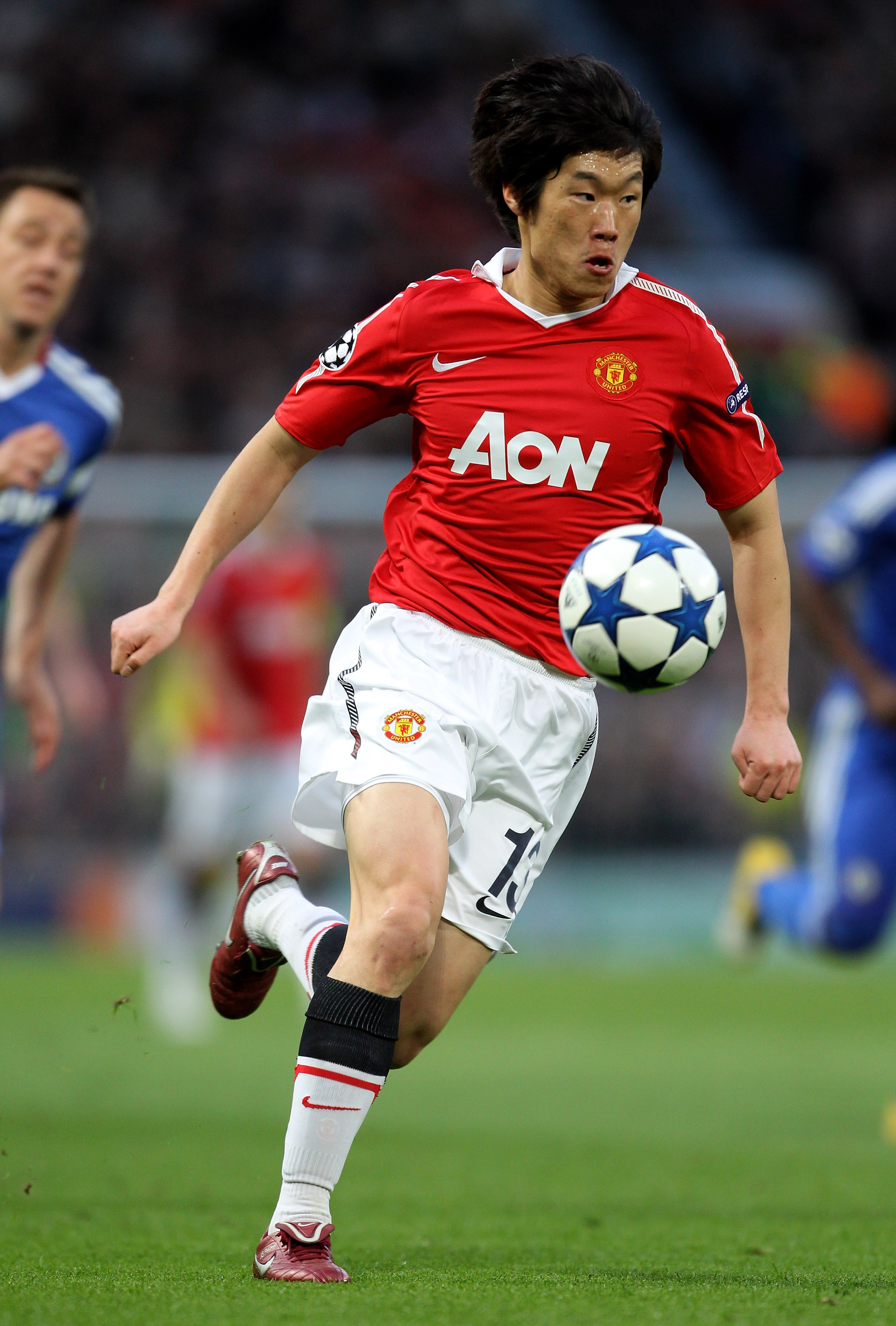
The most decorated footballer in Asian history, Park Ji Sung has the raised the level of what is required to be considered an "unsung hero".
Gone are the days of unsung heroes being holding midfielders who protect the back four. Now, for that title, players have to be like Park Ji Sung.
That is, they have to be modern-day versatile midfielders, playing in the middle or on either wing, slotting anywhere across the now commonly used 4-5-1 comfortably, while putting in tireless performances which cover more distance than other player on the pitch by moving into great attacking positions, being on hand when the opposition counter-attack, and being there for the pass when his team start an attack.
The Manchester United and South Korea star epitomises all of that, bringing a new definition to the term "unsung hero."
Paul Scholes

From one Manchester United great to another, Paul Scholes defines the deep-lying playmaker.
Unlike a Wesley Sneijder, Scholes will sit deep in the holding mid position while picking out wingers or strikers making forward runs with superbly accurate cross-field passes to get attacks going quickly and not giving the opposition defence enough time to get into shape.
His sensational passing has helped Manchester United win so many trophies over the years, while it has inspired the likes of Xavi Hernandez and most recently Jack Wilshere.
Andrew Watson
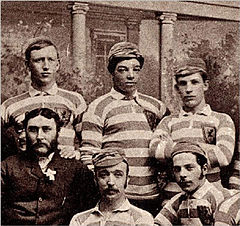
Andrew Watson was the first ever black footballer to play for his country at international level in football, representing Scotland after arriving from one of the British colonies.
After studying at University of Glasgow, his love for the sport grew ever stronger, and ultimately led to him trying to force his way into the national team.
Realising his talent was just too good to turn down, he was called up to the squad, and his debut against England on March 12 1881.
Watson was the first player to break down barriers in football, planting the seed for the foundation of equality in football.
Arthur Wharton
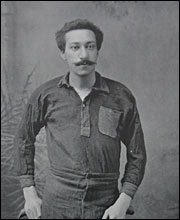
Arthur Wharton continued the work of Andrew Watson a decade later, as he became the first ever black professional player in football.
Born in Accra to Ghanian royalty, he arrived in England to become a priest, but soon ditched that idea in favour of becoming a full-time footballer.
Fighting for the right to earn money and use his talent in the same way as every other player, Wharton was part of the first ever Invincibles team, i.e. Preston North End in the 1880s.
Over a century later, his legacy still lives on, inspiring the Football Unites, Racism Divides campaign amongst other things.
Gabriel Batistuta
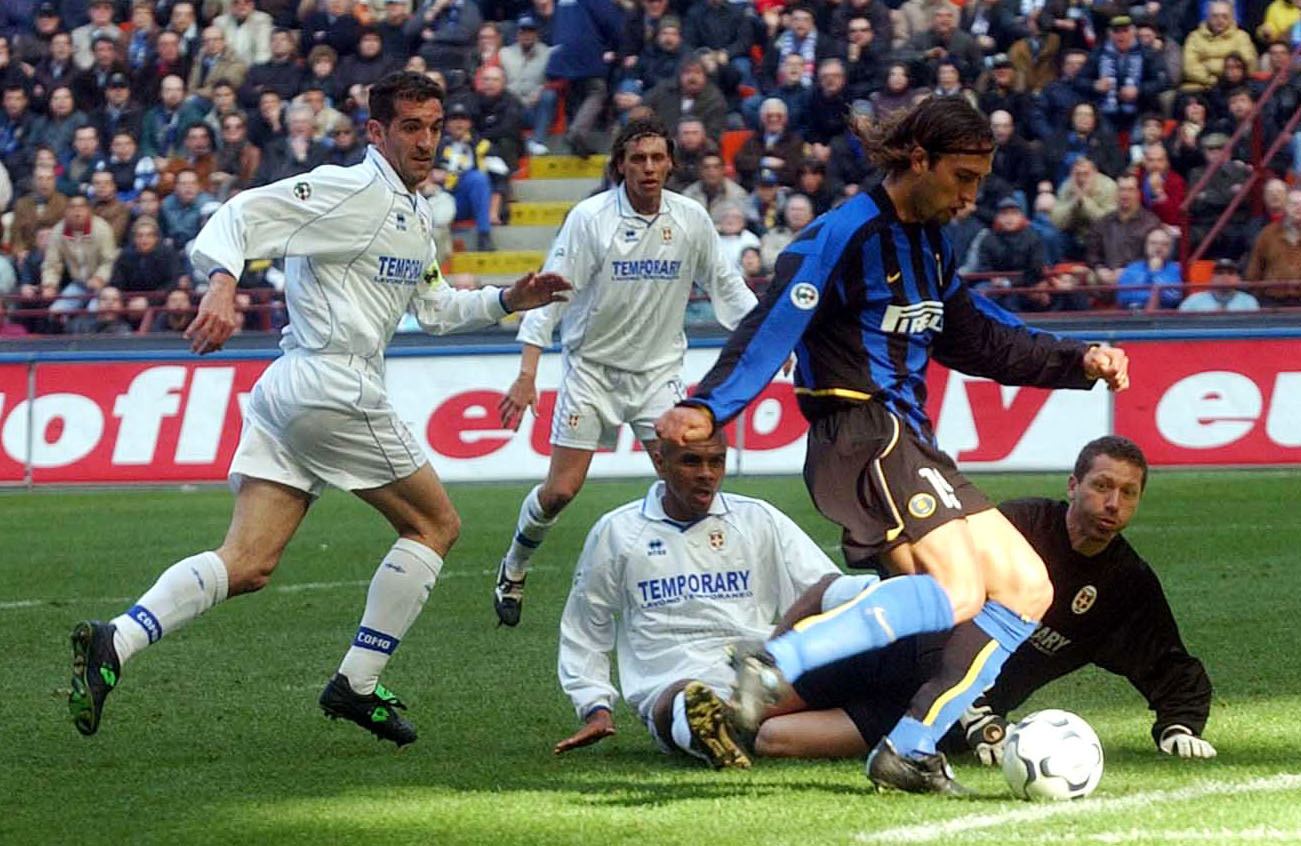
Prolific Argentina and Fiorentina striker Gabriel Batistuta became the leading forefather of the goal-poaching striker.
Inspiring Hernan Crespo, Ruud Van Nistelrooy and Michael Owen amongst others, Batistuta would hang around that penalty area like an annoying STI, waiting the perfect chance to strike.
And whenever the chance came, he was always on hand to tuck the ball home, as proven by his 306 club career goals in 550 games, as well as a staggering 81 goals in 105 caps for Argentina.
Gerd Muller
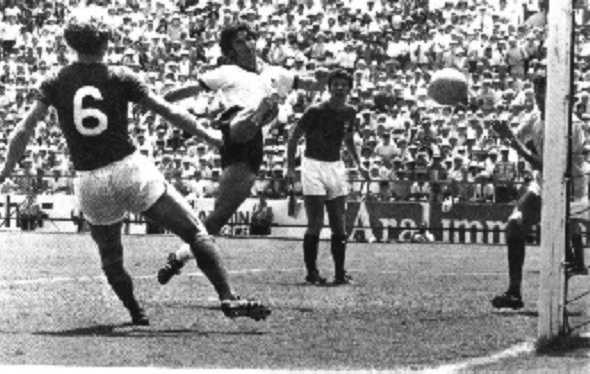
Speaking of prolific, goal-poaching strikers, who better to include than the German machine that was Gerd Muller?
572 goals from 669 club matches made this man unbelievably prolific in front of goal, but even more impressive was his 68 goals in 62 caps for West Germany.
So how did he do it? Well, just read this passage, taken from Muller's Wikipedia page: "Müller was short, squat, awkward-looking and not notably fast; he never fit the conventional idea of a great footballer, but he had lethal acceleration over short distances, a remarkable aerial game, and uncanny goalscoring instincts.
"His short legs gave him a strangely low center of gravity, so he could turn quickly and with perfect balance in spaces and at speeds that would cause other players to fall over. He also had a knack of scoring in unlikely situations."
It's safe to say Gerd Muller was an inspiration to all future strikers.
Franz Beckenbauer

From one German God to another, Franz Beckenbauer really was the Kaiser.
Credited with inventing the modern-day sweeper, Beckenbauer was always two steps ahead of the game, taking the ball from attackers without them even realising, breaking down attacks, and starting new ones for his team.
He was also a terrific header of the ball, both defensively and attackingly, using his superb aerial ability to beat attackers and clear the ball, and to beat defenders and score goals, as proved by his 14 goals for West Germany and his 81 club career goals overall.
An absolute legend of the game, and the best centre-back to ever play the game, Beckenbauer has been an inspiration to all that have followed in his footsteps.
Lev Yashin
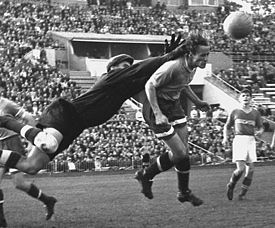
Undoubtedly the greatest goalkeeper of all time, Lev Yashin took goalkeeping to a new level.
As strikers and outfield players became better technically, and physically became stronger and therefore had more powerful shots, goalkeepers had to adapt and themselves become better equipped.
Yashin rose to that challenge, and his extraordinary athleticism, with his unbelievable agility, leg strength and wrist strength to punch or turn the ball away was incredible.
He also came up with the idea of coming out off the line to collect the ball and take it away from the attackers, or goalkeeper sweeping as it's called.
He also showed that the best goalkeepers in general are tall goalkeepers, with his imposing stature, and along with table tennis-esque reflexes, redefined goalkeeping standards.
Paolo Maldini
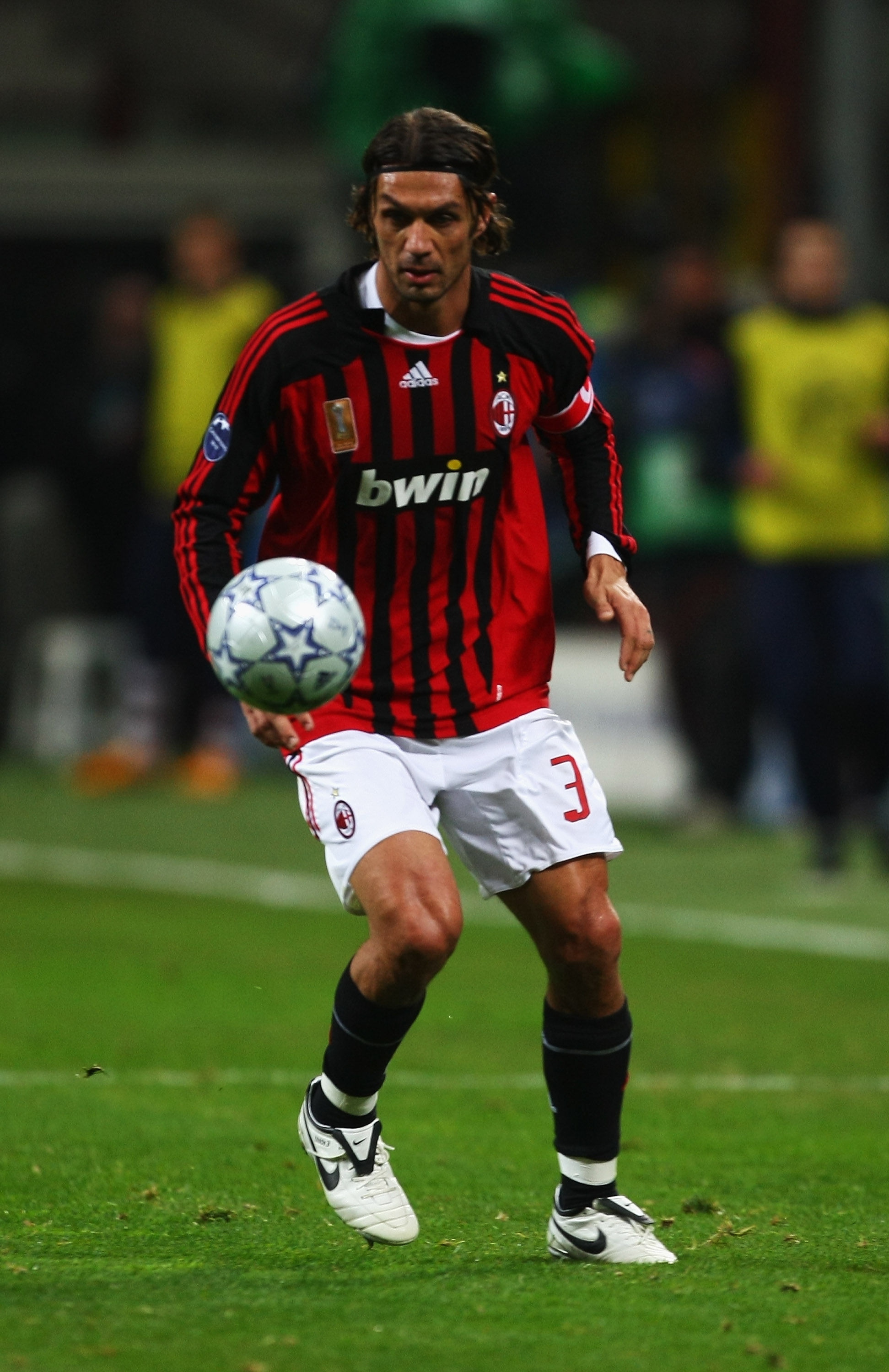
A God for AC Milan and Italy, Paolo Maldini will forever be remembered as one of the greatest defenders of all-time.
Like Franz Beckenbauer before him, Maldini managed to change defending into what it is today.
Maldini was the leading forefather in tactically committing professional fouls, while he was never afraid to get forward and had all attributes of the players playing further up the pitch, with a svelte touch and dazzling dribbling ability.
A step ahead of the game, he would act like a midfielder or striker when defending, reading their every move and blocking off their every option.
Paolo Maldini put the importance of learning the whole game into defending, knowing how and where strikers, wingers and playmakers will move and pass to.
Garrincha
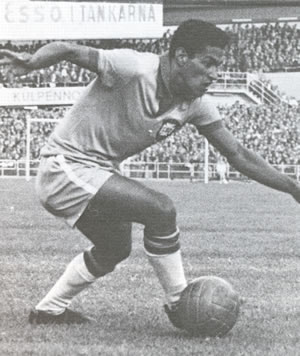
Brazil legend Garrincha is considered the best dribbler of the ball in football history, and is recognised by FIFA as the best Brazilian player after Pele.
During his career, Garrincha redefined standards for playing on the wing, making it an exciting position in which watching fans could always expect the unexpected.
Using his dribbling ability, Garrincha became one of the first to do the seemingly impossible; make something out of nothing. Marked by three defenders, he's pop the ball over their heads and run through the middle of them to have a shot on goal or put in a cross.
Garrincha taught all players after him to do one thing when they come unstuck; to use their imagination.
Zinedine Zidane

Zinedine Zidane is one of the most famous names in football. Memorable for his time at Juventus then Real Madrid, for being the most expensive player in the world for ages, and for his superb performances in front of the world for France.
And then of course, there's that incident at the World Cup in 2006.
But Zidane changed football, not because of his headbutt on Marco Materazzi, but because amazing ability to control the ball with his head, chest, thigh, foot, etc, and then to immediately play the ball forward for a striker or winger to be through on goal.
He wasn't a typical playmaker, but Zinedine Zidane brought a new element to starting attacks, controlling the ball perfectly before instantly playing it on into a dangerous position for a teammate.
And of course his overall game was phenomenal, while many of his trademark tricks have been attempted by footballers across the world today.
Gianluigi Buffon

If Zidane was on that slide, then Juventus and Italy goalkeeping legend Gianluigi Buffon just has to be on this one.
The most expensive goalkeeper in the world, costing £32.6million, Buffon set the standard for reliability, with his uncanny skill to hardly ever make mistakes, meaning all top level goalkeepers are now under more pressure than ever before.
Buffon is also the leading forefather at instilling confidence in his defence, with his constant communication being a major reason in Italy winning the World Cup in 2006.
Serie A Goalkeeper of the Year a record eight times, Buffon has redefined modern-day goalkeeping standards.
Carlos Tevez
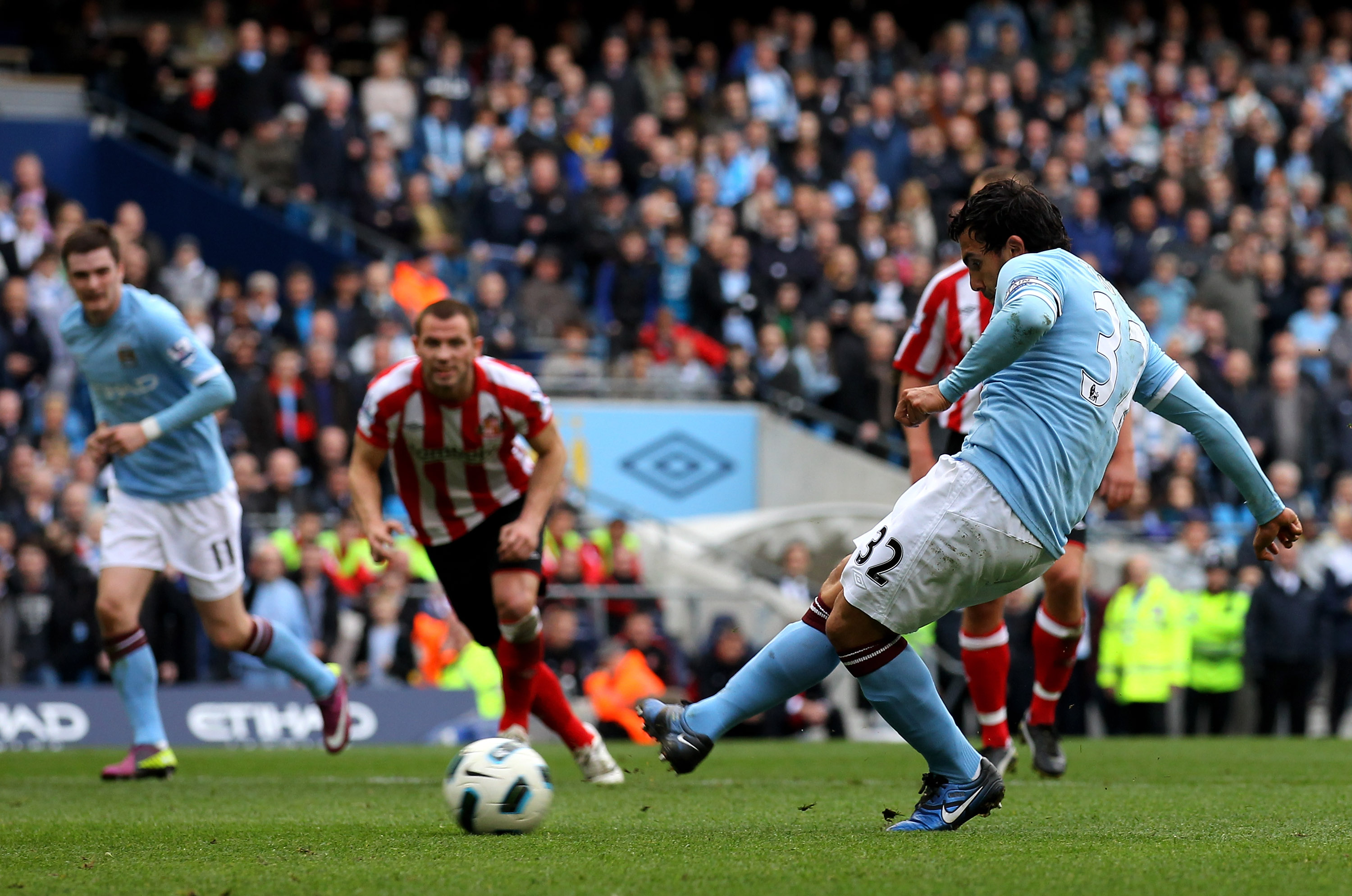
Following his protracted transfer saga after moving from West Ham to Manchester United, Carlos Tevez inadvertently thrust the issue of third-party ownership to world football.
Having his economic rights owned by Media Sports Investment (MSI), it was reported that Tevez had agreed to join Manchester United in a deal worth £20 million, which was subject to an appeal from West Ham; the Hammers said in turn that they would block any transfer unless they received a majority of the transfer fee.
The case was put to the Court of Arbitration for Sport, £2million compensation was paid to West Ham and Manchester United "loaned" Tevez for two years from MSI.
It was a totally new way of dealing with transfers.
Hristo Stoichkov
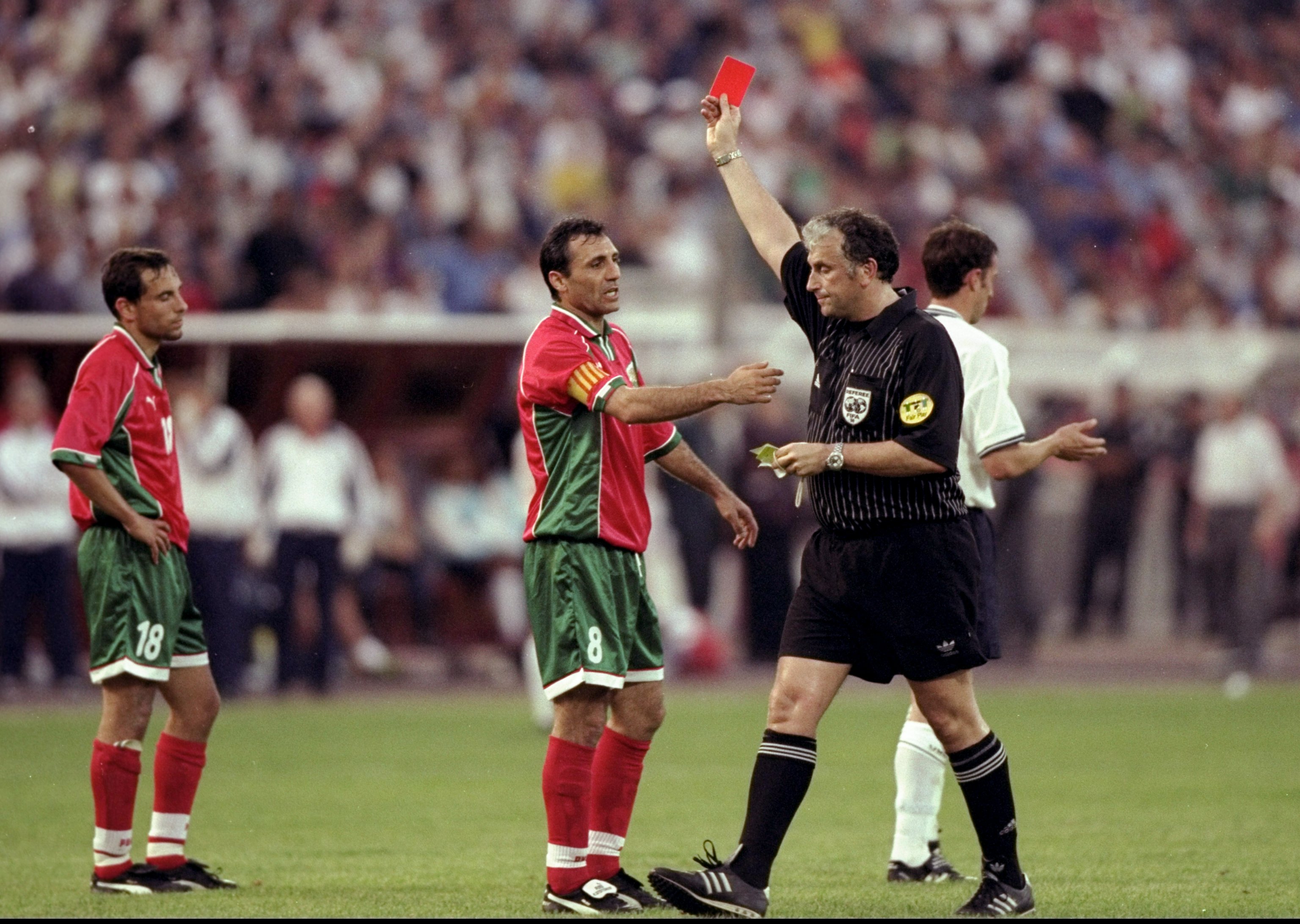
Known for his erratic temper amongst other things, Bulgaria legend Hristo Stoichkov made attacking unpredictable.
The former Barca forward would take shots at goal unexpectedly, would make dashes into the box out of nowhere, and when he received the ball, he'd go flying with it down the wing.
Influencing modern-day players like Gareth Bale, Stoichkov was the first of his kind in using pure power and pace to leave defenders left for dead.
Marta

We never said these players have to be male, and Samba starlet Marta has changed women's football dramatically, with her dazzling array of skills making the women's game all the more watchable.
She is the only ever player, male or female, to win the FIFA World Player of the Year five times, and is so prolific, she's scored 56 goals in 55 caps for Brazil.
Such a prolific goalscorer, striker Marta makes a lot of the men on this list flush with her goalscoring record.